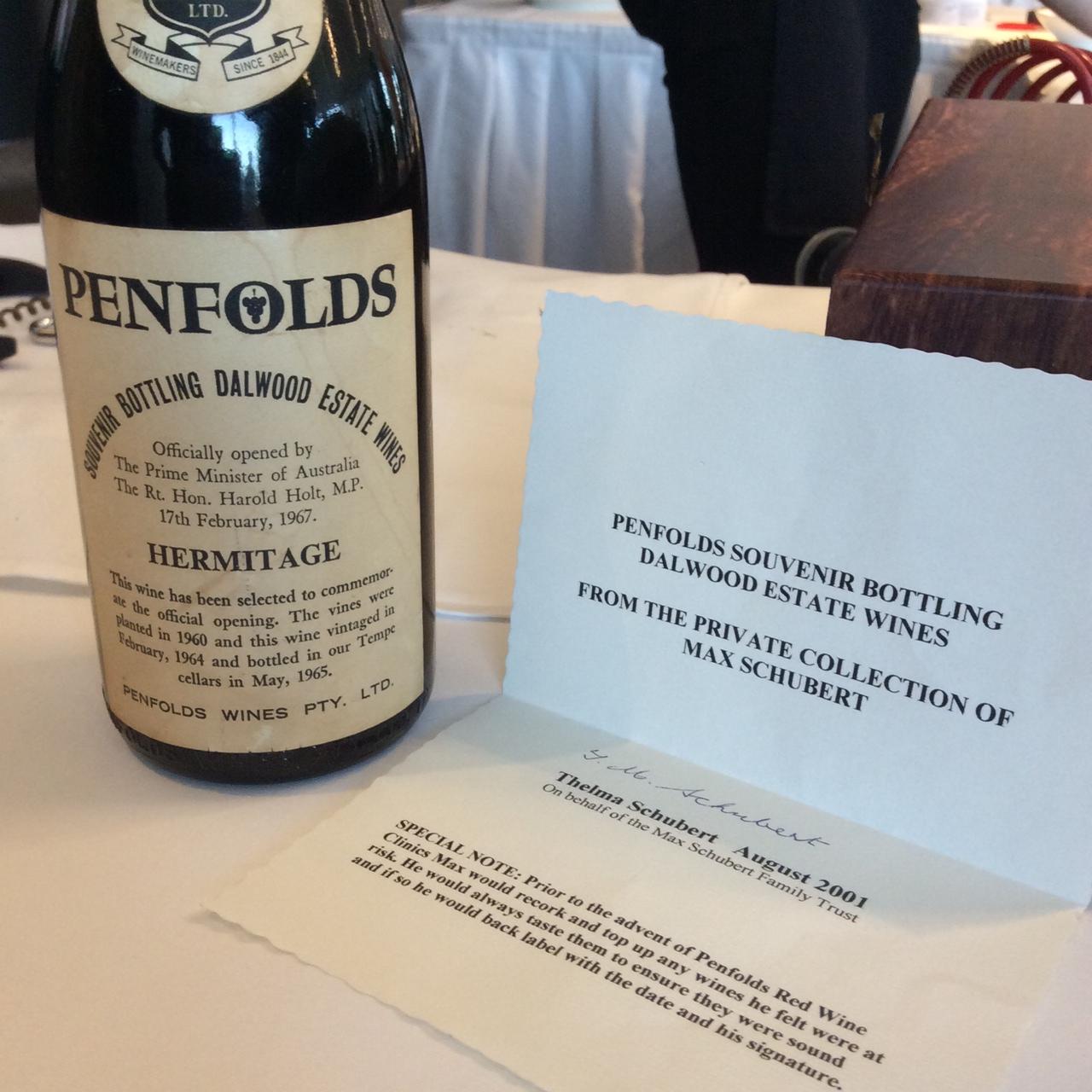Nick's Article: A Visit to the Clinic
 We’ve all had those waiting room moments: The television plays silently on the wall, chairs arranged just so, there’s a scattering of well-thumbed magazines and newspapers to pass the time. Inevitably you size up the other people in the room, wonder why they’re here and then your name is called.
We’ve all had those waiting room moments: The television plays silently on the wall, chairs arranged just so, there’s a scattering of well-thumbed magazines and newspapers to pass the time. Inevitably you size up the other people in the room, wonder why they’re here and then your name is called.
“Nick, we’re ready for you now.” I snap out of my daze and greet the assistant with a warm smile. “Thanks for joining us,” she says. This is no ordinary clinic. In fact, there’s a wine bar in the far corner of the waiting room and it’s no ordinary wine bar. I’m at the Penfolds Re-corking Clinic in Melbourne, part of what is now a global initiative that has opened, assessed and re-corked more than 120,000 bottles since the first clinics in 1991.
Penfolds’ chief winemaker, Peter Gago, is beaming as I stride up to him standing in front of the head table. The room has another half dozen stations where Penfolds winemakers are busily discussing, opening, tasting and delivering health reports to eager and sometimes anxious collectors.
Gago starts to recount a trio of 1955 Grange bottles that he assessed the day before, interrupted mid-story to hop across to a nearby table where three carefully cellared bottles of 1971 Grange are lined up like soldiers at a parade. I’m tense just watching; I can’t even imagine what the collector next to me is going through.
The first is an each-way call but appears to be heading the wrong way as it sits in the glass. It receives the dreaded white dot, which means it’s not going to be certified. It’s a take home and drink proposition. The second is battle weary from the outset and receives the same.
Gago heads straight into the third glass, we’re all sweating, arms folded, I’m literally holding my breath. Gago is in his element. “That’s a great ’71, as good as I’ve seen,” he declares, clearly impressed by what’s in the glass. It’s a happy ending of sorts; I feel like I should shake the collector’s hand, the poor guy looks like he’s been on a fair ride in the last 20 minutes.
Those first two bottles will be dosed with inert gas, re-corked with a blank, unprinted cork and will not be given a new red capsule. The advice is to drink them soon. The third, sound bottle is topped up with a simpatico wine, gassed, re-corked with a Penfolds branded cork and given a shiny new red cap. A certification label signed by a member of the Penfolds winemaking team is applied and it’s good to go.
The Penfolds Re-corking Clinics are now a global initiative with this year’s run taking in Beijing, Montreal and Los Angeles as well as a handful of Australian capital cities. Any Penfolds wine aged 15 years or older is welcome and this well-oiled machine is constantly surprised by what they see.
Gago also talks about the tough decisions that go on as to which bottles should be opened and assessed. It’s a big decision and collectors literally do sweat on it. There’s even a specialist representative from a reputable wine auction house (Langton’s within Australia and Christies internationally) to counsel you on the pros and cons if you’re unsure.
For whilst an older wine, say the inaugural Grange from 1951, can be elevated to maximum value with certification, younger wines can engender suspicion in the market place and devalue. The logic here is that most 15 to 20 year old bottles if cellared correctly wouldn’t be deemed risky enough to need opening.
The other logical question is the now widely-discussed threat of counterfeit in this rarified corner of the wine world. Gago explains that these clinics are becoming a dual exercise in certifying quality alongside authenticity, a handy way to underwrite the value of older Penfolds wines amid the looming threat of fake bottles.
And then there are also the real surprises, discovering wines that have previously never been seen or bottles that trace a noteworthy narrative. This year a rare bottle of commemorative Dalwood Hermitage 1964 came through the door in great condition, having previously belonged to the late Penfolds winemaker and “originator” of Grange, Max Schubert.
A wine that traverses several points in Australian history, Penfolds relocated the Dalwood Estate in 1960 and the 1964 bottling (presumably the first commercial crop) was issued as a souvenir edition in 1967. It commemorated the launch by then Prime Minister, Harold Holt, on February 17, 1967. Holt famously disappeared later that year whilst swimming at Cheviot Beach near Melbourne. His body has never been found. The ’64 Dalwood lives on!
Nick Stock is a renowned Australian wine writer, author, presenter and filmmaker who reports on his worldwide wine tasting experiences for JamesSuckling.com.